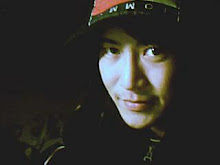
silicon microstructures as viewed under a scanning electron microscope.

Black silicon surface viewed at high magnification
The structured surface is strongly light-absorbing; the surface of silicon, normally gray and shiny, turns deep black. In addition to near-unity absorption in the visible, the irradiated surface absorbs over 80 percent of infrared light for wavelengths as long as 2500 nm. Photodiodes with remarkable responsivity in both the visible and infrared can be made using this microstructuring process. We are investigating using the extended absorption range to make silicon solar cells that convert more of the sun's spectrum into usable electricity.Sulfur plays a critical role in the high absorption and unique optoelectonic properties. The laser irradiation leaves a thin, disordered surface layer that is highly sulfur doped that is crucial for the optical properties. Current work focuses on finding new optical and electronic applications for this unique surface, understanding the mechanism for light absorption and photocurrent generation in the infrared, and looking into other fruitful substrate/dopant combinations.
Plainly Speaking
Silicon is the material of computer chips and solar cells. It is ubiquitous throughout the high-tech world. Ordinarily, silicon absorbs a moderate amount of visible light, but a substantial amount of visible light is reflected as well, and infrared and ultraviolet light are transmitted through silicon or reflected from it with very little absorption.

Spiked silicon surfaces, in contrast, absorb nearly all light at wavelengths ranging from the ultraviolet to the infrared. This suggests it may be very useful in improving the performance of existing silicon devices, such as detectors and photovoltaics. Spiked silicon is made by shining a series of very short, very intense laser pulses at a silicon surface in a chamber filled with a gas such as sulfur hexafluoride or chlorine. In the presence of the laser light, the gas reacts with the silicon surface etches away some of it, leaving a pattern of conical spikes behind.



沒有留言:
張貼留言